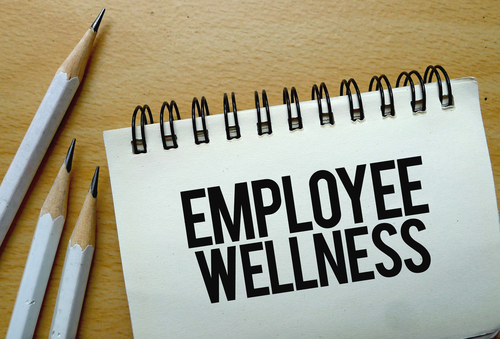A company’s workforce is commonly its most important asset. Not only is this where the majority of resources are allocated, but staff are also the driving force for success. In fact, company labor costs can account for as much as 70% of total business costs, including employee wages, benefits, payroll, and other related taxes.
Typically, it can be difficult for companies to strike the right balance between financial compensation and profitability, but there’s also a third factor to consider in modern times: employee wellness. Perhaps in the Victorian times, it was OK to have poor workplace safety standards and low pay and constantly demand more, but in today’s labor market, this isn’t OK.
Employee wellness has always been important for productivity, but it hasn’t always been recognized or a priority. But things have changed; 87% of employees consider health and wellness offerings when choosing an employer. So, let’s take a closer look at employee wellness and the impact it can have on essential elements such as productivity, turnover, and recruitment.
What Are Employee Wellness Activities?
Employee wellness is vital to a company’s success, as it not only can improve morale and well-being but also helps increase performance and job satisfaction. Companies and HR departments have a wide range of wellness activities and programs to choose from to ensure they fit within the organizational structure.
It might be something as simple as a summer party for all employees or something more structured and regular, such as monthly wellness meetings or appointing someone on the team to be a mental health first aider.
It’s important to note that not all activities will have the same impact. For example, parents may value flexible working hours more than they would taking a day out at a spa, although they may appreciate both.
Improving Productivity
It stands to reason that a worker who feels more energized and content is going to be more productive. Some may perhaps work better under pressure, but for the most part, staff well-being is critical to productivity levels.
Furthermore, workplace well-being and mindfulness initiatives can also lead to greater levels of creativity and problem-solving, creating an agile and resilient workforce capable of overcoming challenging situations. With improved energy and levels of creativity come increased motivation and an attitude to work, which continue to help drive productivity forward.
Reducing Burnout
Companies can positively challenge their staff to try and achieve more, but that doesn’t mean cracking the whip every 5 minutes—physically and metaphorically. Ambition is essential for success, but it must not come at the expense of your staff’s mental health.
Setting targets and goals for individuals, departments, and the entire company is a great way to maintain momentum and push for greater things, though we must not lose sight of the impact this effort has on people. In these instances, it’s important employees feel supported and for their hard work to be recognized.
Continually asking for more from them is a surefire way to wear them out. But if we check in; praise their efforts; monitor for signs of stress and fatigue; and, most importantly, take the time as a company to celebrate achievements, we can reduce the likelihood of burnout.
The Impact of Time Loss
Besides feeling tired, burnt-out staff can also become demotivated to continue doing their best or begin to look for other employment opportunities at organizations that prioritize wellness.
By reducing these feelings through well-being programs, staff are less inclined to take sick days, which avoids a drop in productivity and prevents other members of the team from having to work harder to pick up the slack. Staff who are suffering from burnout and a lack of support may also be less confident in their performance and may find it difficult to speak out about their situation. An approachable, reassuring, and responsive work environment can provide an important level of stability and trust for staff who may be struggling.
Reducing Staff Turnover
Reducing employee turnover is a key element to improving productivity, as you hold onto your staff who perform well and don’t have to spend additional funds to find and train new recruits.
Focusing on health and wellness is also key for boosting morale across the team and increasing loyalty toward the employer. With an energized and experienced team, you can all pull in the same direction, adding new starters to aid growth and keep building up a head of steam.
Recruiting Better
Effective wellness initiatives not only promote the retention of your current experienced employee base but also pave the way to growing your talent pool. Healthy and productive workers can help build a more positive brand image for your company, which, in turn, can make recruiting the talent needed to drive further success much easier.
Whether it’s through staff endorsements through your website, professional networking channels such as LinkedIn, or simply sharing images of your wellness activities through social media or your website, when people see the emphasis you place on employee well-being, they’ll be more likely to want to work for your company.
Focusing on employee wellness is great for everyone who works in your company and a truly effective way to showcase your brand ethos to your customers. A huge 84% of people trust online reviews as much as they would a personal recommendation, so when looking to both recruit employees and win new customers, make sure your staff endorsements are visible across your website and social media channels.
Employee Wellness Can Transform Your Fortunes
Employee wellness is a vital cog in the wheel of any company in the modern working world. Whether it’s the ability to offer hybrid or remote working, financial benefits for a job well done, employee assistance programs, or a free lunch, it all makes a difference. Happier and more motivated staff are more effective and well worth the investment.
Chester Avey is a Guest Contributor at HR Daily Advisor.

